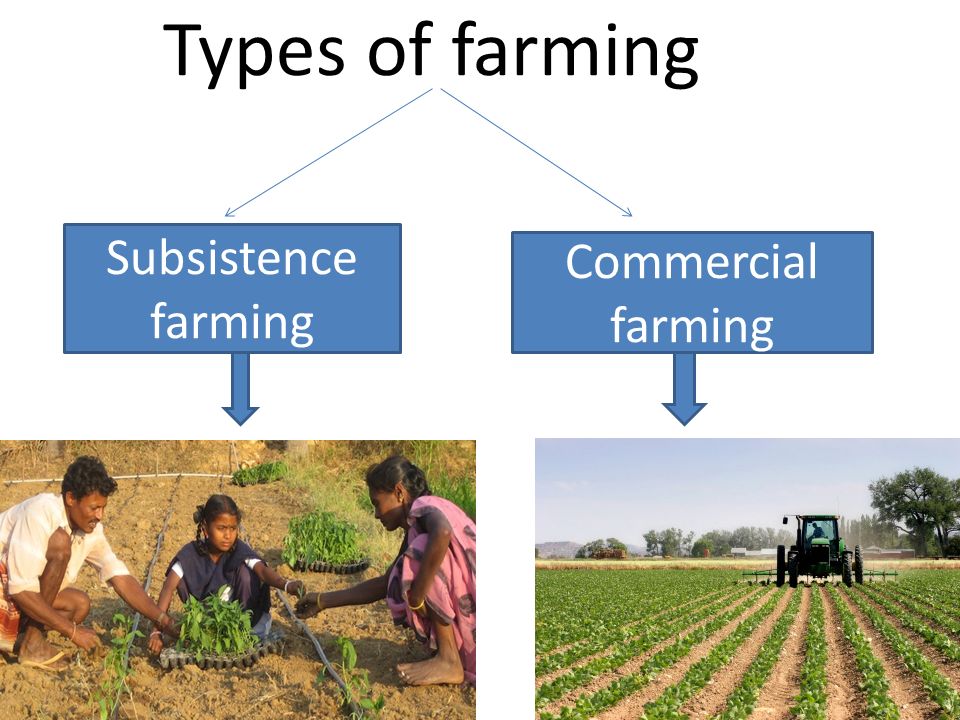Discovering the Distinctions In Between Commercial Farming and Subsistence Farming Practices
The duality in between commercial and subsistence farming techniques is marked by differing objectives, operational ranges, and source use, each with extensive implications for both the setting and society. Business farming, driven by revenue and efficiency, typically utilizes advanced modern technologies that can result in significant environmental issues, such as soil deterioration. On the other hand, subsistence farming stresses self-sufficiency, leveraging standard methods to maintain house demands while nurturing area bonds and social heritage. These different practices increase fascinating inquiries concerning the equilibrium between financial development and sustainability. Exactly how do these different strategies shape our world, and what future instructions might they take?
Economic Purposes
Economic goals in farming techniques commonly dictate the techniques and scale of operations. In commercial farming, the main financial goal is to make the most of profit.
On the other hand, subsistence farming is mostly oriented towards meeting the prompt requirements of the farmer's family, with surplus production being very little. The financial objective right here is commonly not make money maximization, but rather self-sufficiency and threat minimization. These farmers typically operate with minimal sources and depend on typical farming strategies, tailored to neighborhood environmental conditions. The primary objective is to guarantee food safety for the home, with any excess fruit and vegetables offered locally to cover standard necessities. While business farming is profit-driven, subsistence farming is focused around sustainability and strength, showing a fundamentally various collection of economic imperatives.

Scale of Procedures
The difference in between commercial and subsistence farming becomes particularly obvious when taking into consideration the range of procedures. The range of industrial farming allows for economies of range, resulting in lowered prices per unit via mass manufacturing, enhanced efficiency, and the ability to spend in technical improvements.
In plain comparison, subsistence farming is usually small, concentrating on creating just sufficient food to fulfill the prompt demands of the farmer's household or regional area. The land area entailed in subsistence farming is usually restricted, with much less access to contemporary technology or automation.
Source Usage
Business farming, identified by large procedures, commonly employs innovative technologies and mechanization to maximize the use of resources such as land, water, and plant foods. Accuracy agriculture is significantly embraced in commercial farming, utilizing information analytics and satellite innovation to check crop wellness and maximize resource application, additional improving yield and source performance.
In comparison, subsistence farming operates on a much smaller scale, largely to fulfill the prompt requirements of the farmer's home. Resource use in subsistence farming is often limited by financial restrictions and a dependence on conventional strategies.
Ecological Effect

Conversely, subsistence farming, practiced on a smaller scale, typically utilizes conventional techniques that are more in consistency with the surrounding atmosphere. While subsistence farming usually has a reduced environmental impact, it is not without obstacles.
Social and Cultural Implications
Farming practices are deeply intertwined with the cultural and social textile of communities, affecting and mirroring their values, customs, and economic frameworks. In subsistence farming, the emphasis gets on cultivating sufficient food to fulfill the immediate demands of the farmer's family members, typically promoting a strong sense of area and shared obligation. Such techniques are deeply rooted in local traditions, with expertise gave via generations, therefore protecting social heritage and reinforcing communal ties.
Alternatively, commercial farming is mainly driven by market needs and earnings, usually resulting in a shift in the direction of monocultures and large procedures. This strategy can bring about the erosion of traditional farming techniques and social identifications, as local customizeds and understanding are supplanted by standardized, industrial methods. The emphasis on effectiveness and earnings can often lessen the social communication discovered in subsistence areas, as economic purchases change community-based exchanges.
The duality between these farming practices highlights the wider social ramifications of farming selections. While subsistence farming sustains social continuity and area interdependence, industrial farming lines up with globalization and look at more info economic development, commonly at the cost of typical social structures and cultural variety. commercial farming vs subsistence farming. Stabilizing these facets stays a crucial challenge for sustainable agricultural growth
Conclusion
The assessment i was reading this of commercial and subsistence farming methods discloses substantial distinctions in purposes, scale, resource usage, environmental influence, and social ramifications. On the other hand, subsistence farming emphasizes self-sufficiency, using conventional approaches and regional sources, thus promoting social conservation and community cohesion.
The dichotomy in between industrial and subsistence farming techniques is marked by differing purposes, functional scales, and resource use, each with profound effects for both the atmosphere and culture. While commercial farming is profit-driven, subsistence farming is focused around sustainability and strength, showing a basically various set of economic imperatives.
The distinction between industrial and subsistence farming comes to be especially noticeable when thinking about the scale of procedures. While subsistence farming supports cultural continuity and area interdependence, commercial farming lines up with globalization and financial growth, frequently at the price of typical social frameworks and social variety.The assessment of business and subsistence farming techniques reveals substantial distinctions try this website in goals, scale, source usage, environmental impact, and social implications.